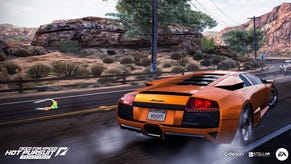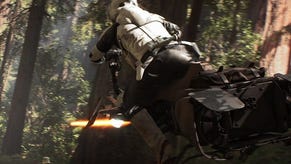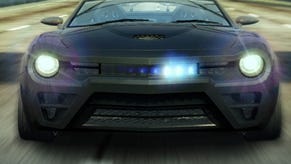Face-Off: Need for Speed: Hot Pursuit
Law and order it now?
So just how responsive is Hot Pursuit? There are two things to factor in here. Firstly, based on our previous latency measurements we have Burnout Paradise pegged at a four frame, 67ms response - in line with pretty much every 60FPS racer we've measured, including Forza 3 and Ridge Racer 7. So that's the baseline ideal. Secondly, this is where we can factor in the PC version, which can run at 60Hz with a fairly menial (by today's standards) tech spec.
In this test we take a look at the Xbox 360 and PC versions, both using a 360 wireless pad. The methodology in measuring input latency is really straightforward - you get hold of a Ben Heck controller monitor board, which lights LEDs when buttons are pressed, then film both the game display and the board with a 60FPS camera. Count the frames between the LED lighting up, and the action occurring on screen, deduct the lag of the screen and multiply the number of frames by 16.67ms.
The screen we use is the aged but still superb Dell 2405FPW. Feed it a 720p image and you get a display latency of three frames. While we have faster displays here, the three frame lag is tried, tested and consistent, so we're sticking with it.
Measuring lag in a shooting game is easy - muzzle flash is the best possible indicator. For a driving game we use the brake light test instead: switch to an external view, hit the brakes and count the frames between button press and the brake lights activating.
In our previous tests, we have never seen controller latency on a 30FPS game improve over a baseline 100ms. However, multiple measurements with Xbox 360 Need for Speed: Hot Pursuit confirm a five frame delay - so 83ms in total. This makes the game the most responsive 30Hz title we've ever tested and means that despite halving the frame-rate, controller response in Hot Pursuit is just one frame slower than the 60FPS Burnout Paradise.
The PC test, where the game is running at the full frame-rate (as evidenced by the FRAPS counter in the top-left), has a confirmed 50ms input lag, making it the most responsive 60Hz game we've ever tested. Over and above the additional controller response, the PC version gives players the chance to power past the limitations of console technology and enjoy the full-fat 60Hz experience. The good news is that the required hardware to do so is relatively light - a fast dual-core CPU in combination with something along the lines of an NVIDIA 8800GT should provide the requisite horsepower not only to run the game at 60FPS but also to achieve full 1080p, or 1920x1200 resolution to boot.
The advantages of the smoother refresh over and above the class-leading controller response are self-evident - the increase in frame-rate gives that uncanny arcade feel that most racing games of this generation haven't quite managed to capture. However, the increased resolution also has its own advantages - judging where the gaps are in roadblocks is rather difficult until it's too late, but with the enhanced detail in the distance this becomes much, much simpler. An unwanted side-effect is that LOD transitions on the traffic do become noticeable whereas they are effectively invisible on the native 720p console games.
A noticeable issue with many console titles ported over to PC is the fact that the core art assets are fundamentally designed with 720p resolution in mind. While running in a higher native resolution on PC produces cleaner visuals, there's often a sense that the texture detail just isn't there to warrant the higher pixel-count. Thankfully Criterion recognises this, and within the display options is the ability to switch in higher-detail artwork. Other tweakables allow you to boost soft-shadow quality over the console versions, plus you can enable and disable motion blur.
There are some disadvantages to image quality on PC, however. The console versions operate with 2x multi-sampling anti-aliasing, but the PC version omits it entirely and it appears that delving into the GPU control panel and using driver-level anti-aliasing implementations doesn't work for the most part, regardless of your hardware vendor. An edge detect/blur mode setup for StarCraft appears to help a little bit, while others report that Radeon's edge detect AA implementations also help. The recently revealed AMD MLAA post-process also works, but doesn't look particularly good on a game like this, where fine detail in the distance gets blurred, looking worse than the game running untouched.














